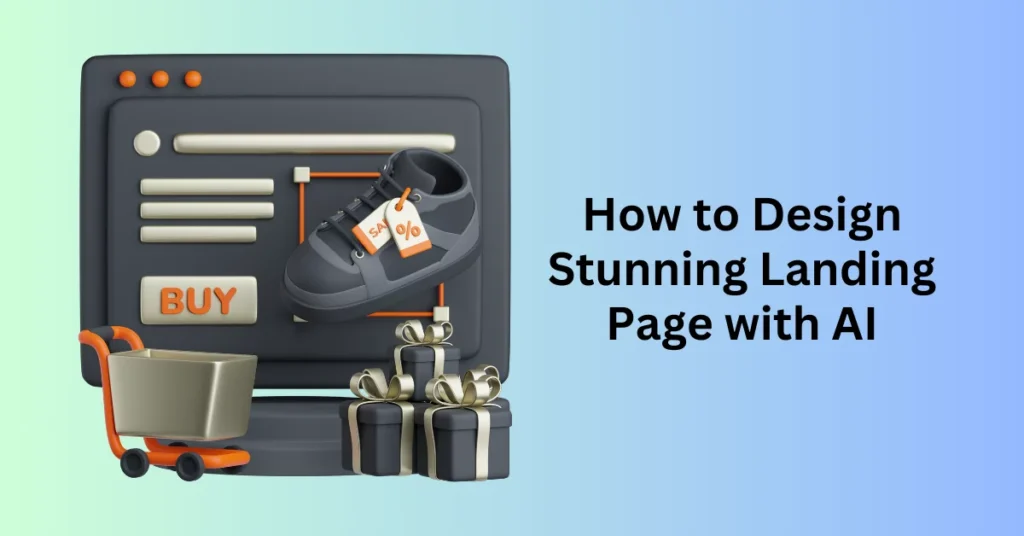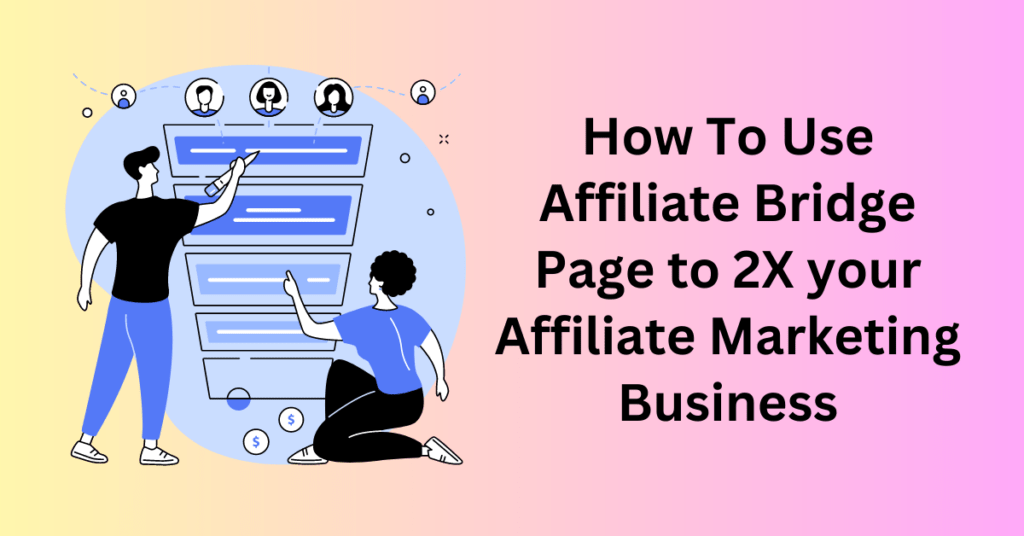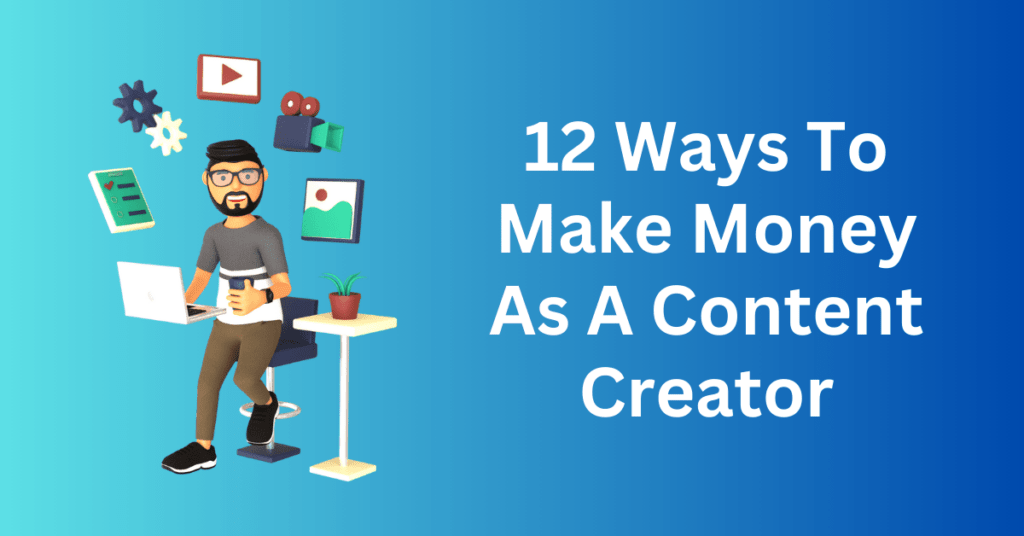In today’s digital world, a well-designed landing page is crucial for capturing your audience’s attention and driving conversions. However, creating a visually stunning and high-performing page can often feel like a daunting task. Enter AI—an innovative tool that’s transforming the way marketers and business owners approach design. With AI-powered tools, building a beautiful landing page has never been easier or more efficient. From generating visually appealing layouts to optimizing content for engagement, AI can streamline the process while ensuring your page stands out.
In this blog, we’ll guide you through the steps to create a stunning landing page using AI. We’ll also share tips on selecting the best tools and explore how to optimize your page for maximum impact. Whether you’re a beginner or an experienced marketer, these AI-driven strategies will help you craft a landing page that looks great and converts visitors into loyal customers. Let’s dive in!
What is a Sales Funnel?
A sales funnel is a strategic process designed to guide potential customers through different stages. It transforms visitors into engaged leads, leads into paying customers, and customers into loyal, repeat buyers.
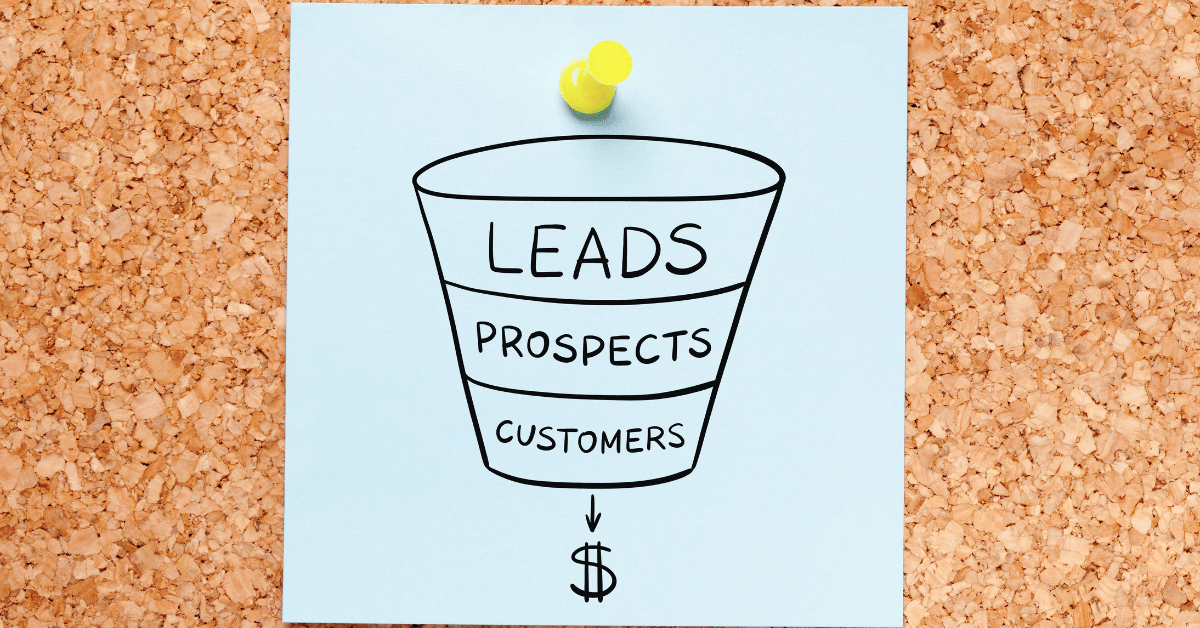
Most businesses operate with some form of sales funnel. However, high-growth, venture capital-backed startups may prioritize rapid expansion over-optimizing their revenue flow. Despite this, many business owners fail to fully optimize their sales funnels. In many cases, they rely on methods that seem to work or simply replicate what competitors are doing, assuming it will bring similar results.
The downside of this approach, however, is that it often leaves significant revenue untapped. To unlock your business’s full potential, you need a carefully crafted sales funnel that is designed to maximize earnings at every step. This is where the Value Ladder sales funnel becomes essential. It helps businesses strategically grow their revenue by nurturing relationships with customers at various stages of their journey.
What is the Value Ladder Sales Funnel?
The Value Ladder Sales Funnel, developed by Russell Brunson, is a strategic framework designed to guide potential customers through a carefully planned journey, increasing trust and engagement at each stage. This approach is built on three fundamental principles:
- Trust is Key to Closing Sales: No matter the price of the offer, trust is the critical factor in successfully converting a lead into a customer.
- Higher-Priced Offers Require Greater Trust: The more expensive the product or service, the more trust you need to establish before making the sale. That’s why it doesn’t make sense to lead with your highest-priced offer—it’s too soon to ask for such a commitment from someone who hasn’t yet built enough confidence in you.
- Building Trust with Small Steps: To gain trust, start by offering something of value for free. Typically, this involves asking for the customer’s email address in exchange for the free offer. Once you’ve earned their email, you can begin nurturing the relationship by presenting your most affordable offer first. As trust grows, you gradually introduce higher-priced products or services, each offering greater value, culminating in your premium offer.
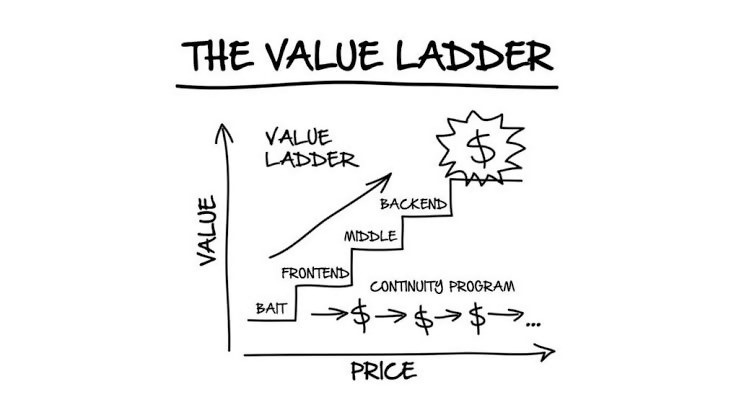
The core idea behind the Value Ladder is to gradually increase the value you offer while building trust with your customer base. This structure ensures that you don’t overwhelm potential customers and that the transition from one stage of the funnel to the next feels natural and rewarding.
In our experience, the Value Ladder sales funnel is the most efficient method for online sales because it’s a proven approach to rapidly gaining the trust needed to close higher-ticket sales. By strategically increasing both the value and price at each level, businesses can maximize their revenue while simultaneously strengthening customer loyalty.
How Do Lead Generation Landing Pages Work?
Lead-generation landing pages are designed to capture contact information from visitors. Typically, this is done in exchange for something of value. When people mention “landing pages,” they are often referring to these types of pages—those built to gather leads, not directly sell products.
These landing pages are the first stage in the Value Ladder sales funnel, known as the Bait stage. In this stage, you offer something free, such as a downloadable guide, webinar access, or a special offer, in exchange for an email address. This is where you begin building a relationship and collecting information to nurture the lead further.
For businesses just starting out or those without products to sell, setting up a simple lead generation funnel is a great first step. You can use social media marketing to drive traffic to your landing page, encouraging visitors to sign up for your free offer. This allows you to start building an email list immediately—a valuable asset you can later monetize through promotions, product launches, or affiliate marketing.
If you already have something to sell, you’ll want to take it further and create a Value Ladder sales funnel. This approach not only captures leads but also nurtures them through multiple stages. It gradually offers more value, ultimately leading to conversions at various price points.
Creating Your Landing Page with ClickFunnels AI Sales Funnel Builder
ClickFunnels has introduced an AI-powered sales funnel builder designed to make the process of creating a sales funnel easier and more efficient. Here’s a step-by-step guide to how it works:
Step 1: Share Your Business Info to Create a Landing Page with AI
The first step is to provide some basic information about yourself and your business. You’ll answer questions like:
- Who are you?
- What’s your business about?
- Who is your target audience?
- What problem will you help them solve?
This information will help the AI understand your needs and tailor the funnel accordingly.
Step 2: Choose Your Funnel Type to Create a Landing Page with AI
Next, you’ll select a funnel template that aligns with your business goals. Here are the six available funnel options:
- Optin Funnel: The most popular choice for growing your email list, perfect if you don’t have a product yet but want to capture leads.
- Application Funnel: Ideal for businesses that offer high-touch services and need to qualify leads before engaging them.
- Webinar Funnel: Perfect for offering a free webinar and pitching your product or service to the audience at the end.
- Summit Funnel: A great option for organizing an online summit with multiple speakers, offering a free registration and upselling VIP tickets with exclusive perks.
- Bridge Funnel: Aimed at affiliate marketers, this funnel creates a bridge between your website and the affiliate product’s sales page, helping you pre-sell the product.
- Video Series Funnel: Also known as the product launch funnel, designed to build anticipation before releasing a product or service.
Each funnel type comes with a detailed explanation, so you can easily choose the one that best fits your business.
Step 3: Customize Your Brand
Now, you’ll personalize your funnel:
- Select your main brand colour to determine the colour scheme of your funnel.
- Choose a funnel style which dictates fonts, borders, spacing, and design elements for a consistent look across your funnel.
Step 4: Choose Your Image Style to Create Landing Page with AI
Next, you’ll pick an image style that fits your brand:
- Isometric 3D illustrations
- Flat illustrations
- Stock photo portraits
This choice will help set the visual tone for your funnel.
Step 5: Provide More Business Details
Optionally, you can provide more details about your business and choose a tone for the sales funnel copy (e.g., casual, professional, friendly, etc.). You’ll also see an AI-generated example of sales copy based on the information you’ve provided. Feel free to tweak the copy until it matches your voice and style.
Step 6: Generate Your Funnel
Once you’re satisfied with all the choices, click the “Create Funnel Now” button, and within minutes, the AI will generate a fully personalized sales funnel for you.
Step 7: Claim Your Funnel
After your funnel is created, you can claim it and take advantage of a 14-day free trial to explore all of ClickFunnels’ features.
With ClickFunnels’ AI sales funnel builder, creating a sales funnel is now faster, easier, and more customized to fit your business needs!
How Long Does it Take to Create a Landing Page With ClickFunnels AI Sales Funnel Builder?
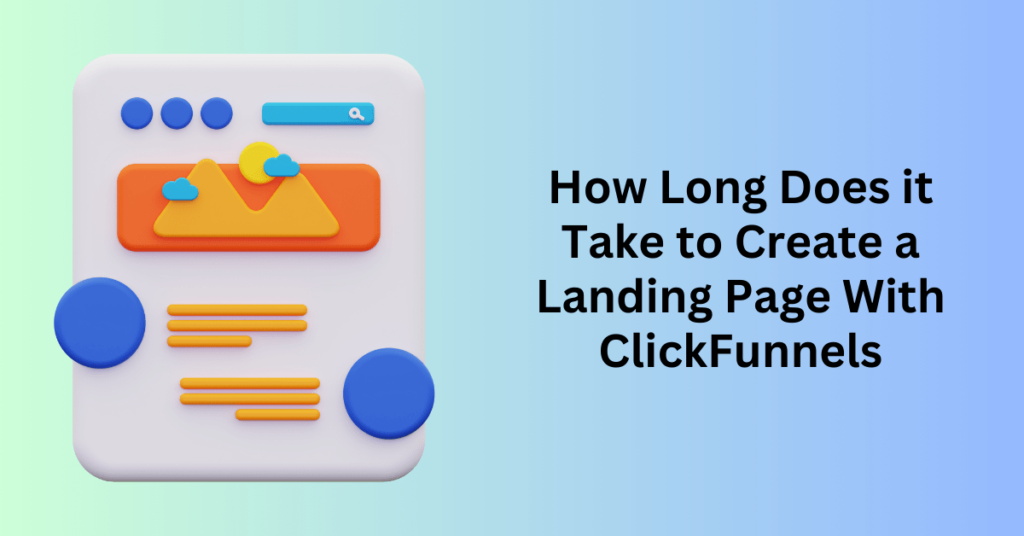
Creating a landing page with ClickFunnels AI Sales Funnel Builder is quick and straightforward, typically taking only about 10-15 minutes. After you’ve gone through the simple setup process, the AI will generate your funnel for you.
Once it’s created, you can use ClickFunnels’ visual drag-and-drop editor to customize and fine-tune the funnel until it matches your vision.
When you’re satisfied with the final result, it’s time to publish your funnel and begin driving traffic to it, so you can start attracting leads and generating sales!
Optimize Your Sales Funnel with A/B Testing
Once your sales funnel is live, it’s essential to continuously improve its performance, and ClickFunnels offers A/B testing functionality to help you optimize for higher conversions.
A/B testing is a powerful method used by digital marketers to test variations of a landing page or funnel element to determine which version performs better in terms of conversion rates. By comparing two different versions, you can make data-driven decisions to improve your funnel’s effectiveness.
How Does A/B Testing Work?
Here’s how to leverage A/B testing with ClickFunnels to optimize your sales funnel:
Step #1: Develop a Hypothesis
Begin by forming a hypothesis about what you believe could improve your funnel’s conversion rate. For example, you might think that a red call-to-action (CTA) button will perform better than a green one.
Step #2: Create Two Variants of Your Landing Page
Next, design two versions of your landing page—Variant A and Variant B—with only the element you’re testing differing between them. For instance:
- Variant A: A landing page with a red CTA button.
- Variant B: A landing page with a green CTA button.
Make sure all other elements remain identical, so you can isolate the impact of the specific change you’re testing.
Step #3: Test Your Hypothesis
Once the two versions are live, it’s time to drive traffic to both landing pages. Here’s how to proceed:
- Split your traffic evenly: Direct 50% of the traffic to Variant A and the other 50% to Variant B.
- Let the experiment run long enough to gather significant data—enough so that you can confidently assess which version is performing better.
Once you’ve reached statistical significance, analyze the results:
- Which variant resulted in more conversions?
- Did the change you hypothesized—such as the button color—make a noticeable impact?
A/B testing helps you make informed decisions by allowing you to validate your ideas before fully committing to changes. This method can be applied to various elements within your sales funnel, including headlines, images, CTAs, form fields, and much more, ensuring that you’re consistently improving your funnel’s performance and maximizing conversions.
With ClickFunnels’ A/B testing feature, you have the tools to continually refine and optimize your funnel for better results.
What Should You A/B Test in Your Sales Funnel?
To optimize your sales funnel for conversions, it’s essential to A/B test key elements. Here are some of the most impactful factors to test:
1. Your Free Offer
Your free offer is often the first interaction a potential customer has with your business, so it plays a huge role in determining conversion rates. A/B test different offers to see which one resonates best with your audience. You might test:
- A free eBook vs. a free webinar
- A downloadable checklist vs. a free trial
- A mini-course vs. a free consultation
Experiment until you find the offer that drives the highest conversion rates.
2. Landing Page Design
ClickFunnels provides optimized templates, but testing different design elements can still yield valuable insights. Consider A/B testing:
- Colour schemes: Test different colour combinations to see which one leads to higher conversions.
- Call-to-action button colours: While colour itself isn’t always the key factor, it’s important that the CTA button stands out against the rest of the page. Experiment with various colours to determine which one attracts more clicks.
3. Landing Page Copy
The copy on your landing page can make or break your conversion rate. Key elements to test include:
- Headlines: Since the headline is the first thing visitors see, it’s crucial to make it compelling. Test different headlines to find one that resonates most with your audience.
- Subheadlines: The subheadline supports the headline and further elaborates on the offer. Test variations to see which one adds the most clarity and appeal.
Your goal is to find the headline and subheadline combination that best captures your audience’s attention and persuades them to take action.
4. Social Proof
Social proof is one of the most powerful ways to build trust and increase conversions. A/B test different types of social proof to see what works best for your audience:
- Endorsement quotes from well-known figures in your industry
- Testimonials from users who have experienced success with your offer
- “As Seen On” media badges to showcase your credibility and authority
If you don’t have social proof yet, it’s essential to actively work on gathering it to use in future tests.
5. Images
Images play a crucial role in supporting your copy and connecting with your audience. Test different types of images to see which one resonates best:
- Personal brand images: If you’re a personal brand, try testing photos of you in different settings. For example:
- A relatable, friendly photo where you look approachable.
- An authoritative photo where you look professional, such as speaking at a conference.
- Company brand images: For a company, use aspirational images that resonate with your target audience’s goals. For instance, if you’re targeting aspiring digital nomads, an image of someone working on a laptop by the beach might appeal to them.
Experiment with different types of images to see which ones best support your messaging and increase conversions.
By A/B testing these key elements, you can make data-driven decisions that significantly enhance your sales funnel’s performance. Remember, optimization is an ongoing process, and small changes can lead to big results in conversion rates!
Final Thoughts: How to Design a Stunning Landing Page with AI
Creating a beautiful and effective landing page doesn’t have to be complicated or time-consuming. With the help of AI-powered tools, you can easily design stunning pages that are optimized for both aesthetics and functionality. Moreover, these tools remove much of the guesswork by offering personalized suggestions. They also automate layout creation and fine-tune content for maximum engagement. By embracing AI, you not only save time but also ensure that your landing page is professionally crafted and aligned with user preferences.
That said, it’s equally important to maintain a human touch throughout the process. For instance, your landing page should reflect your brand’s unique voice and values. Additionally, it needs to appeal to the specific needs of your target audience. By combining the efficiency of AI with thoughtful design choices and clear calls-to-action, you can create a landing page that not only attracts visitors but also converts them into loyal customers. Finally, as AI technology continues to evolve, staying adaptable and exploring new tools will help you stay ahead in the ever-changing landscape of digital marketing.
